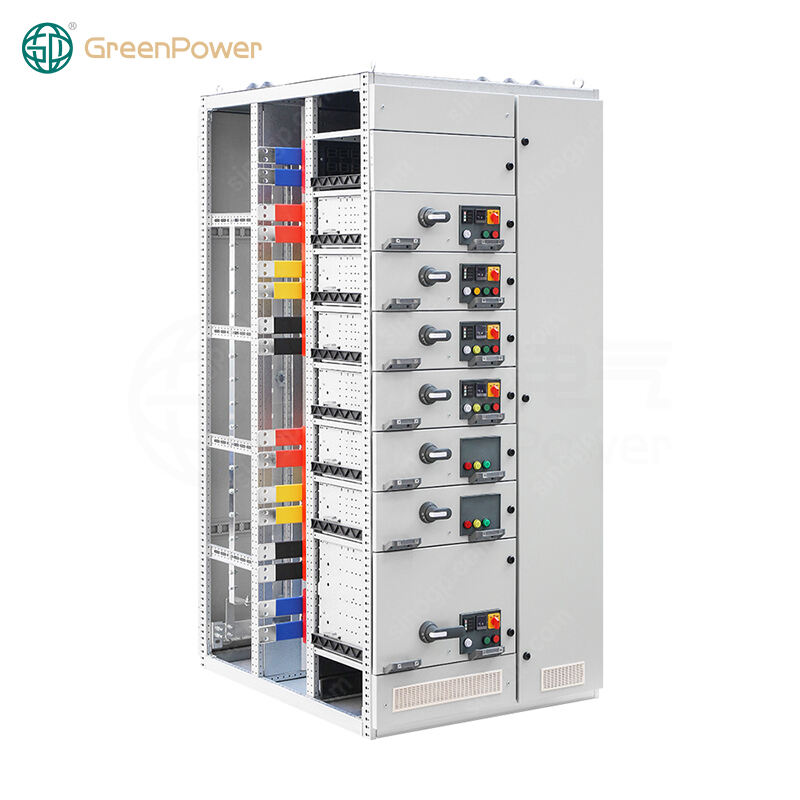In the high and medium voltage power system tier, earthing switches are important components to safeguard maintenance safety and system equipment to be safe. Motorized switches are known for their automation and precision, yet the manual earthing switch has its benefits in certain cases. It is simple, cheap, and dependable in situations automation is unreasonable or in places where there are no automated systems. GPSwitchgear, a proper professional power equipment provider, manual earthing switches design optimally focused on balancing maximization of benefits with fundamental safety design standards. Thus are the benefits of a manual earthing switch, particularly in context to a comparison with its motorized counterpart.
When looking at the structure of a motorized earthing switch, it includes complex elements like motors, control panels, and sensors. In contrast, a manual earthing switch is simpler, consisting only of a handle, transmission mechanism, and a few contact parts. Consequently, the earthing switches can be produced at a lower cost, and the cost of a manual earthing switch will be 40-60% lower than a motorized earthing switch of the same voltage ratings. This feature is significant for small-scale power systems or projects with limited budgets. Furthermore, the manual earthing switch is simpler to install—there is no need for a power supply, and no communication wiring is necessary, unlike the motorized earthing switches which need control systems connections. The entire process can be carried out by 1-2 technicians within a few hours. A practical example can be drawn from budget-limited rural small substations. They need to include simple power distribution and can use a manual earthing switch and still meet the safety standard to cut equipment and installation costs by 50%. In addition to modern self-contained manual earthing switches, GPSwitchgear also improves installation time by offering a modular design for easy assembly.

The motorized earthing switch incorporates many electronic and mechanical constituents like motors and torque sensors. These electronic components might require maintenance like motor lubrication, sensor calibration, and interlock circuit checks. Because the manual earthing switch lacks these electronic components and has a simplified mechanical structure, the manual switch requires negligible maintenance. General maintenance involves handle tightness checks, surface cleaning, anti-rust oil application on transmission components, and surface contact cleaning. These are simple tasks which require no specialized technical knowledge. Also, the manual earthing switch lives long: its mechanical components are built for frequent operations. He stress and damage caused by voltage shifts or electromagnetic fields are typically motorized earthing switch control systems, which makes the manual systems last longer. In a remote industrial workshop with limited maintenance resources, a manual earthing switch can operate stably for 10-15 years with only basic care, while a motorized earthing switch in the same environment may need component replacements every 3-5 years. This is why the handle is steel and the contacts are copper alloy as used in these switches.
Unlike a manual earthing switch, motorized earthing switches will leave the equipment without earthing protection if there is a power outage, which usually happens during system faults or maintenance. A manual earthing switch will also be a power-line safe earthing switch as it uses a handle to perform the earthing operation without a power supply. There is safety in emergency situations. For example, maintenance is being done on faulted equipment during a major power grid failure. Manual earthing switches are ubiquitous as power-line safe earthing switches. They will make faults to be safely checked on. During a blackout, staff use manual earthing switches to earth equipment and avoid electric shock while checking for faults. Power-line safe earthing switches will avoid risks of the motorized earthing switches failing due to power fluctuations in remote regions. GPSwitchgear’s manual earthing switch also provides a clear and simple mechanical indicator (like a position pointer) to show the operator the switch is in the “earthed” or “open” state.

There are situations when the operational control of earthing switches can be indirect when switches are controlled remotely through buttons or other devices. In these instances, the switch operators can be unaware of the switch state. In contrast, manual earthing switches can be operated directly, offering tactile control, owing to the transmission mechanism attached to the handle. Reducing the potential for misjudgment, operators will know when the switch is operating as the handle turns. If the contacts are stuck, the operator will feel the increased resistance and be able to stop before completing the earthing process. Situational control is paramount, especially in small, simple earthing systems, such as maintenance of a transformer, where an operator is able to expedite the earthing process without the unnecessary delay fully automating earthing switch control systems. For instance, a maintenance technician in a small factory can use a manual earthing switch to earth a 10kV feeder line in 1-2 minutes instead of the 3-5 minutes required for the motorized earthing switch to fully perform its self-check and operating procedures.
GPSwitchgear's manual earthing switch is also made with a straightforward operational design, informing users which way to turn the handle to avoid any counterclockwise movement.
The motorized earthing switch is intended for expanded systems with high operational frequencies, where speed and automation are pivotal. In contrast to small commercial buildings, rural residential grids, or temporary construction sites with small-scale power distribution and low-frequency earthing requirements, the manual earthing switch is a more viable option. These cases infrequently demand earthing operations, typically only during scheduled maintenance or for sporadic fault isolation, thus negating the need for speed automation the motorized earthing switch. Consider a mobile substation at a temporary construction site. The system requires earthing only during weekly maintenance and after fault scenarios, the manual earthing switch will suffice to satisfy safety requirements, while a motorized earthing switch would be a costly, insufficient investment as it would rarely be used. Additionally, the compact design of GPSwitchgear's manual earthing switch simplifies the installation process within small power cabinets and temporary equipment, thus expanding its use to small-scale scenarios.
 Hot News
Hot News2025-11-10
2025-11-07
2025-11-05
2025-11-04
2025-11-03
2025-10-25